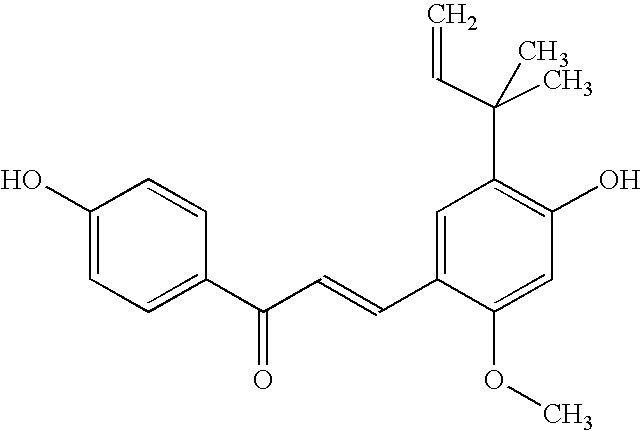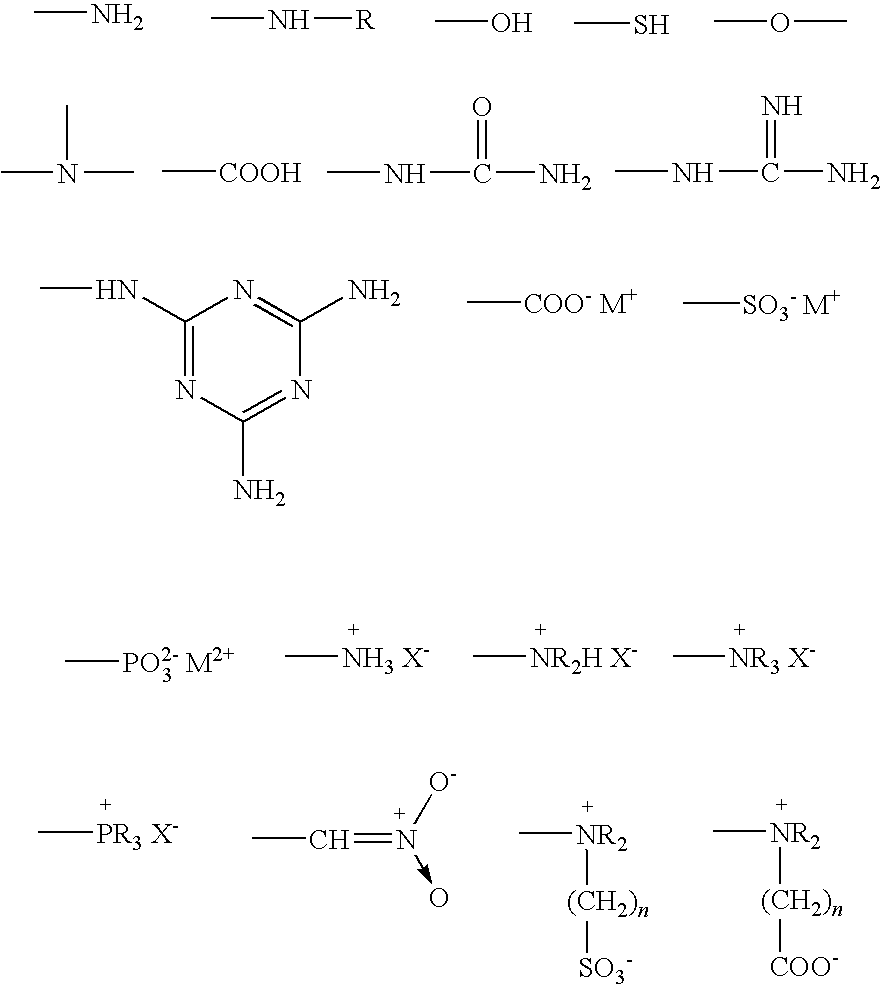Cosmetic preparations containing licochalcone A and an organic thickener
a technology of organic thickener and licochalcone, which is applied in the field of cosmetic preparations or dermatological preparations, can solve the problems of barrier damage, toxic or allergic skin reaction,
- Summary
- Abstract
- Description
- Claims
- Application Information
AI Technical Summary
Benefits of technology
Problems solved by technology
Method used
Image
Examples
example 1
[0335]
O / W Night Cream% by weightGlyceryl stearate citrate2Shea butter2Stearyl alcohol2Cetyl alcohol2Hydrogenated coco glycerides2Caprylic acid / capric acid triglycerides2Ethylhexyl coco fatty acid esters2Cyclomethicone3Dicaprylylether2Tocopheryl acetate1Ubiquinone (Q10)0.1Sodium ascorbylphosphate0.1Licochalcone A0.01Retinyl palmitate0.1p-Hydroxybenzoic acid alkyl ester (paraben)0.6Ethylhexylglycerin0.5Aristoflex AVC0.3(ammonium polyacryldimethyltauramide / vinylformamide copolymerEDTA0.2Glycerin10Water-soluble and / or oil-soluble dyes0.05Fillers / additives (SiO2, BHT)0.2Perfumeq.s.Waterad 100
example 2
[0336]
O / W Day Cream% by weightGlyceryl stearate, self-emulsifying5Stearyl alcohol1Shea butter1C12-15 Alkyl benzoate3Caprylic acid / capric acid triglycerides2Mineral oil1Sunflower oil1Dicaprylyl carbonate3Ethylhexyl cyanodiphenylacrylate (octocrylene)5Ethylhexyl triazone1Bis-ethylhexyloxyphenol methoxyphenyltriazine2Citric acid, sodium salt0.1Licochalcone A0.05Phenoxyethanol0.6p-Hydroxybenzoic acid alkyl ester (paraben)0.3Hexamidine diisethionate0.041,3-Dimethylol-5,5-dimethyl-hydantoin0.1(DMDM hydantoin)EDTA0.2Ethanol (denaturated)2Ammoniumacryloyldimethyltaurate / vinylpyrrolidone0.5copolymerGlycerin10Additives (distarch phosphate, SiO2, BHT)1Perfumeq.s.Waterad 100
example 3
[0337]
Sunscreen Cream% by weightGlyceryl stearate3PEG-40-stearate1Cetearyl alcohol3Shea butter2C12-15 Alkyl benzoate2Cocoglycerides2Octyldodecanol3Beeswax1Ethylhexyl methoxycinnamate7Phenylbenzimidazole sulfonic acid2Butylmethoxy dibenzoylmethane2Sodium ascorbylphosphate0.1Tocopheryl acetate1Licochalcone A0.1Methylpropandiol1Phenoxyethanol0.5p-Hydroxybenzoic acid alkyl ester (paraben)0.2Diazolidinylurea0.1C10-30 Alkyl / acrylates crosspolymer0.1Carrageenan0.1Glycerin7Additives (BHT, iminodisuccinate)0.4Perfumeq.s.Waterad 100
PUM
| Property | Measurement | Unit |
|---|---|---|
| wavelength | aaaaa | aaaaa |
| wavelength | aaaaa | aaaaa |
| hydrophilic | aaaaa | aaaaa |
Abstract
Description
Claims
Application Information
 Login to View More
Login to View More - R&D
- Intellectual Property
- Life Sciences
- Materials
- Tech Scout
- Unparalleled Data Quality
- Higher Quality Content
- 60% Fewer Hallucinations
Browse by: Latest US Patents, China's latest patents, Technical Efficacy Thesaurus, Application Domain, Technology Topic, Popular Technical Reports.
© 2025 PatSnap. All rights reserved.Legal|Privacy policy|Modern Slavery Act Transparency Statement|Sitemap|About US| Contact US: help@patsnap.com



